Bear Field Care
Bear Field Care
After the black bear is down, the work begins. If you would like to de-bone your bear meat, you do not need to gut the bear.
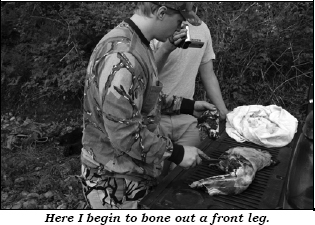
Just proceed to skinning it, and then work on boning out the meat. You may want to gut the bear if you are taking the entire carcass to the butcher shop, or if you want to get back to camp, hang the meat, and deal with the carcass in the morning. Let’s look at how to field dress a black bear.
-
- Make sure you have sharp knife, zap strap, or string.
- Cut around the anus until the anal tract is freed and use a zap strap to tie it off.
- Make an incision from the pelvis up to the sternum, cutting through the skin and stomach wall without puncturing the intestines.
- Reach up into the chest cavity and cut the esophagus off as high as you can.
- Pull the windpipe, lungs, and heart out.
- Pull the intestines, anal tract, and stomach organs out of the cavity.
- Make sure not to nick the stomach or organs which would spoil the meat.
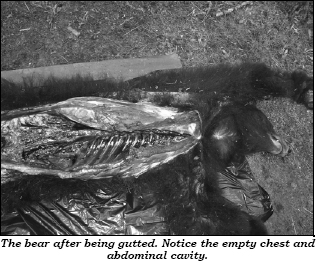
- Prop a stick across the open sternum to allow airflow and then hang it in a tree. Be careful not to damage the hide if you plan on making a bear skin rug.
Skinning For a Bear Rug
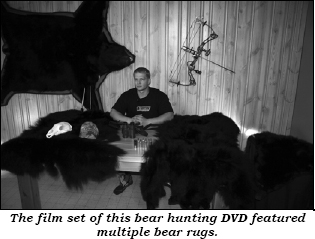
Hunters who are in the field for a long time should be able to skin their game and take care to prevent hair slipping and deterioration of the hide. Skinning requires some fairly straightforward techniques.
Bear Skinning
Use a small knife—a four-inch flexible blade is recommended. A small knife offers better control, especially around the tricky head and face area. The skinning has to be close to the skull. The facial area usually has little hair and cuts can easily show on the skin.
-
- Lay the bear on its back.
- Starting with the front legs, both right and left, make a clean cut from the pads of the paw to the point just below the neck.
- Make a cut from the point just below the neck from over the abdomen, right up to the tip of the tail.
- On the hind legs, make a cut similar to the one made on the front legs.
- Skin around the paws and saw the bone off to leave the paws attached to the hide.
- Skin around the bear to the back of the head.
- Separate the ears from as close to the skull as possible
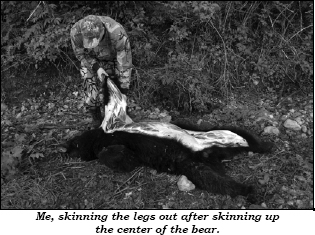
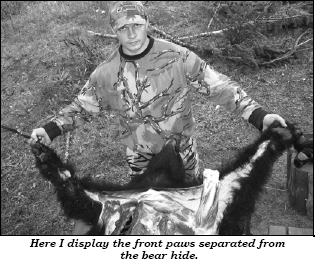
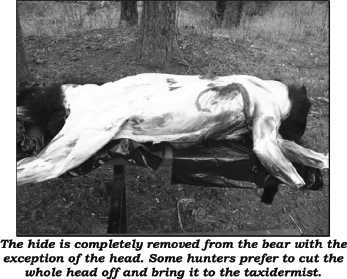
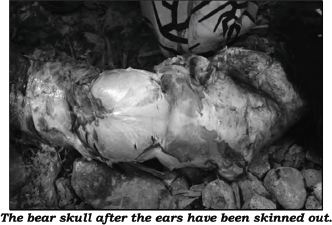
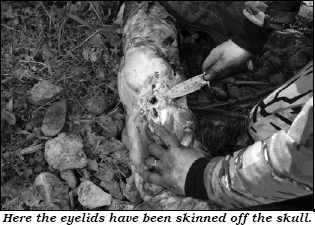
-
- Continue to the eyes, cutting as much of the eyelid off as possible.
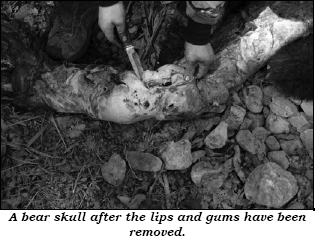
-
- As you work down towards the cheeks, separate the lip tissue from the gums staying as close to the jawbone as possible. Leave lots of lip tissue on the hide.
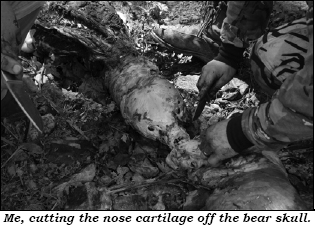
-
- Cut off the nose, keeping the cartilage attached to the hide.
- Remember to leave evidence of sex (penis sheath, vaginal orifice) attached to the hide if your regional hunting game laws require you to do so.
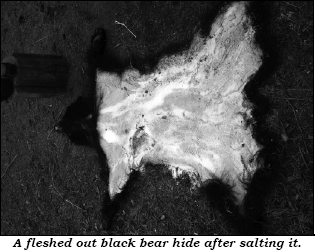
-
- The next important step is to salt the hide after fleshing it out. About 10-20 pounds of salt is required for a black bear. Salt has a dehydrating effect, removing all the moisture and tightening all the hair follicles.
- Liberally apply salt inside the hide, inside the ears, nose, on the split lips, between the feet, and right up to the tail.

- Pack the hide carefully in a game bag and hang it in a cool dry place out of the sun to drain and dry.
- Quickly transport the hide from the field to the taxidermist.
Remember, NEVER store or transport raw hides in plastic. This will cause the hair to slip from the hide.
Measuring Your Trophy
There are several ways to measure your bear to determine if it’s a trophy, but there is only one accepted method of measurement for the Pope and Young and the Boone and Crockett record books.
Measuring a skull requires you to determine the total width and length of a bear skull in inches to assess trophy size. A drying period of 60 days must commence before an official scorer can record the score for the record books. A score of 18 inches is required to qualify for the Pope and Young book while a score of 20 inches is needed to crack the coveted Boone and Crockett book.
For bragging rights among hunting buddies, a nose-to-tail length of a black bear is a common way to specify size. This is simply the measurement from the tip of the bear’s nose to the tip of the bear’s tail. Squaring the hide is also used to determine the symmetry of the bear by adding the nose-to-tail length with the front claw to opposing claw length, and then dividing that number to arrive at the square of the bear.
Weighing a bear on commercial scales is a common way for hunters to brag about the size of their bruins. Some bears have tipped the scales at up to 800 pounds!


